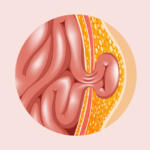Anal fistula is a age old disease with multiple modalities of treatment in modern medicine,ayurveda, homeopathy and so on. Today we have a minimal access surgery for fistula called VAAFT – Video Assisted Anal Fistula Treatment.
In medicine, a fistula is an abnormal connection or tract between two epithelial-lined surfaces, organs or vessels that normally do not connect. It is generally a disease condition. An anal fistula is an abnormal connection between the anal canal and the outer skin of the anus. The anus is the opening of the rectum where bowel movements(stools) leave the body.
An anal fistula can be high or low depending on whether the internal opening is in the anal canal or in the rectum.
An anal fistula usually forms as a result of an infection that occurs in the tissue lining the anal canal. The infection may be caused by the bacteria that normally exists in the rectum. Sometimes an anal fistula may occur as a result of an abscess in the anal area, Inflammatory bowel disease such as ulcerative colitis and Crohn’s disease which are known to damage the lining of the intestine and cause abscesses, Diverticulitis – inflammation of small, harmless pouches in the wall of the intestine, tuberculosis of the bowel, Gonorrhoea in the rectum and cancer of the bowel.
A fistula may present with itching, discharge of pus, irritation of the skin around the anus, pain in the bottom, leakage of stool in the anal area in between bowel movements.
The surgeon will take a detailed history of the symptoms the patient suffers from and will then conduct a detailed clinical examination of the ano-rectal area and will advise the patient, investigations to confirm the presence of fistula and to identify its course in the anorectal area. His investigations will also be directed at identifying the possible reason as to why a fistula may have occurred.
A MRI (magnetic resonance imaging) is one of the best investigations for identifying the fistula and its course in the body. A endoanal sonographic examination is another very good investigation where the radiologist will use an ultrasound scanner to trace the course of the fistula in the body. Investigations will enlighten the surgeon as the possible course of the fistula, the internal and external openings and whether the fistula is low or high.
If a possible cause of the fistula has been found then the treatment of the fistula will be directed to treat the cause of the fistula first. Fistulas are treated by surgery primarily. Antibiotics and medical treatment will only provide temporary relief of symptoms. Conventional surgery for fistula is called Fistulectomy. The surgeon aims to remove the entire fistula from internal opening to the external opening by surgery. Stitches are usually not put and the wound is allowed to granulate and heal naturally. If the fistula is a high, i.e it is going above major muscles in the pelvi, more than one procedure will be required to treat the fistula. The surgeon will also employ a thread or seton to deal with fistula that goes through important muscles. In Conventional surgery a large wound is created and that takes time to heal. Surgery has a potential risk of incontinence for flatus and stool. Hence a surgeon will always err on the side of safety to protect the sphincter muscles and plan a second procedure if the fistula is high.





